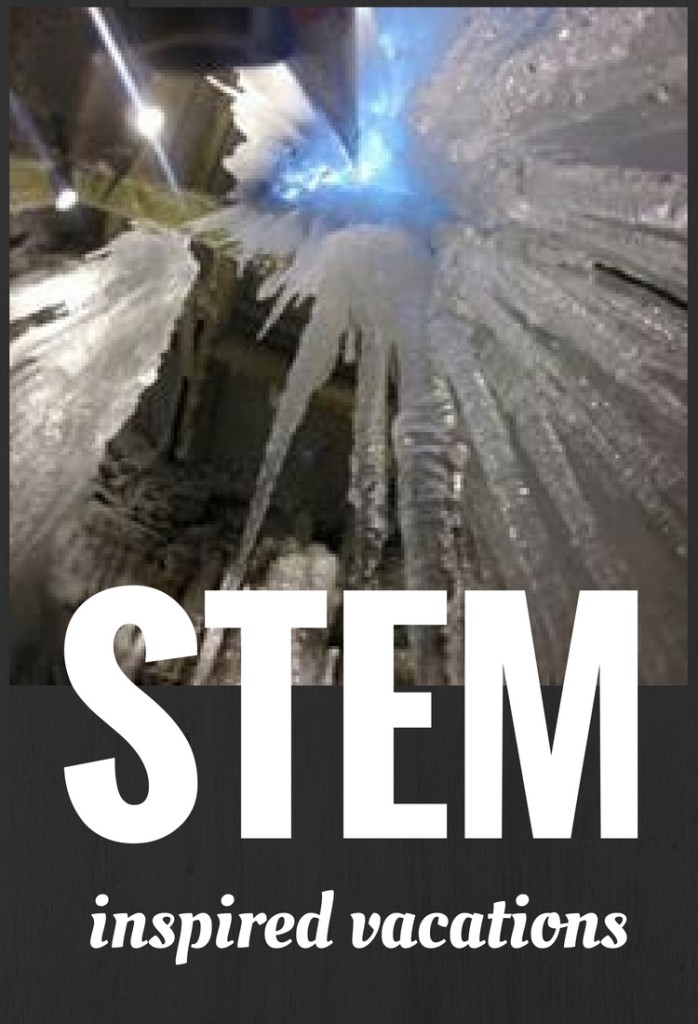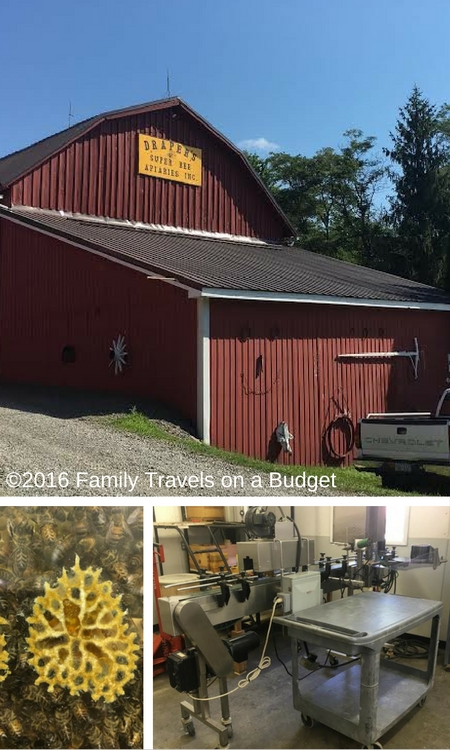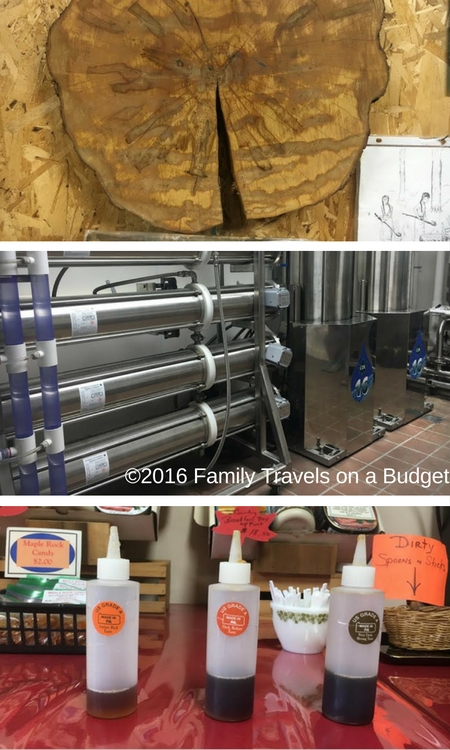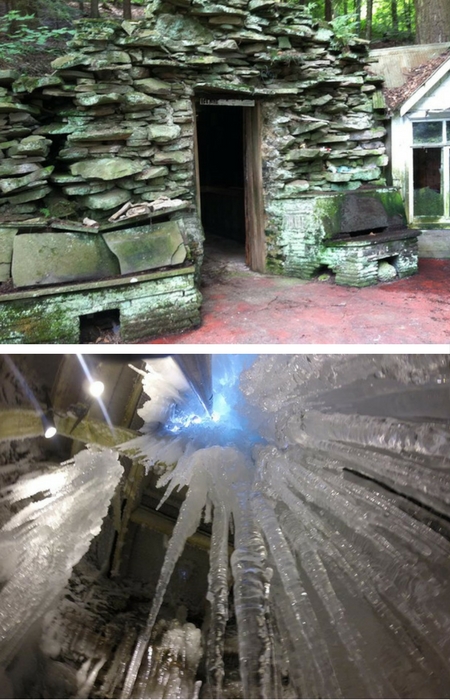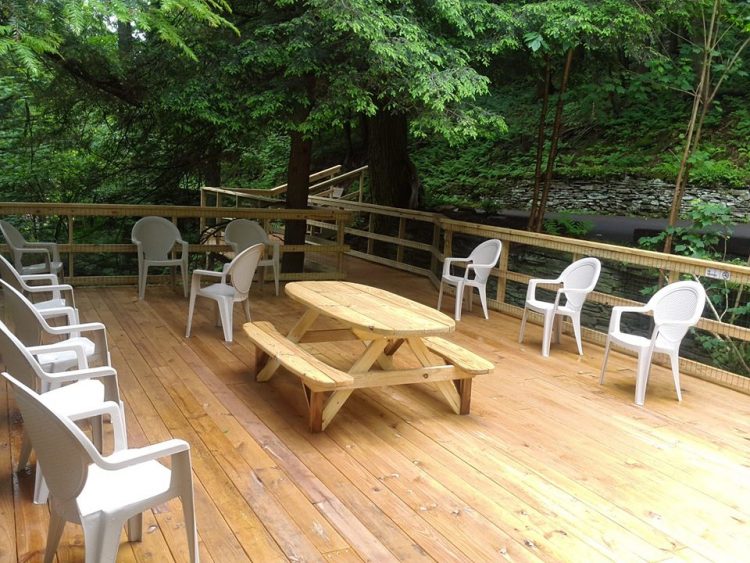STEM: Inspired vacations
This post may contain affiliate links. Click here to see what that means.
STEM, a trend in education, integrates science, technology, engineering and math to understand real world issues. This broad, immersive approach to education helps kids understand the complexities of the real world and also how to apply one skill (math computation as an example) in other fields. In theory, this solves the “how will I ever use the pythagorean theorem in real life?” that puzzled us all growing up!
This summer, Ellie and I took a STEM inspired road trip to Pennsylvania. We saw applied science, math, engineering and technology at work in many industries that are also quite tasty! Curious?
Table of Contents
STEM at Draper’s Super Bee Apiaries
We made our first stop at Draper’s Super Bee Apiaries at 32 Avonlea Lane, Millerton, PA. Owner Bill Draper and his family welcomed us to the apiary and took us on a tour. Ellie and I learned how bees function within the hive. We saw the hives on the property and where the honey is purified and packaged. Along the way, we also learned about threats to the bee population and how to protect them. We saw the high tech equipment used to get honey from hive to jar. Then, our tour ended with a honey tasting — learning how pollen affects the color and the flavor of the honey.
I was surprised to learn that honey flavors change based on the time of year because the pollen each season is so varied. I’ll be honest, I’d never really thought about the science behind the taste of honey.
Ellie found the volume of honey to be fascinating. Draper’s processes huge amounts of honey into large containers every day. I think she understands how much work goes into each little bottle of honey on store shelves!
Have you ever thought about your honey like that?
Tours of Draper’s Super Bee Apiaries are free to the public. Check their website for details. Groups should schedule in advance.
STEM at Patterson’s Maple Farms
Our science tour continued with a tour of Patterson’s Maple Farms at 119 Patterson Road, Westfield, PA. As we drove the country roads through the gentle hills, we admired the scenery. I wondered how I had gone 50 years (gulp) without realizing that farming is a science heavy industry.
On arrival at the farm, we met Linda Neal, our guide. She took us to the barn to explain the history of maple sugaring. Three generations ago, they used simple taps hammered into trees with buckets hung below. She explained how outside temperatures affect the flow of sap and how trees heal from being tapped so that they are not damaged or weakened (see photo above). She also showed us how many gallons of sap go into making one gallon of syrup — any guesses?
Today, Patterson Maple Farms taps more than 83,000 maple trees. New methods are more gentle to the trees and also more automated. That translates to more sugar each year. Of course, increased production with less stress to trees and manpower means increased profits. That’s science we all can appreciate.
Like the honey, our tour ended with a tasting where we learned about the grading and various tastes of maple syrup. YUM!
Did you know that maple is a low glycemic sweetener, so it is healthier than sugar?
I gained a better appreciation for how complex this seemingly simple science really is. Ellie was most impressed by how much sap it takes to make just one gallon of maple syrup, and she liked the tasting, of course!
Tours of Patterson Maple Farms are free and open to the public, with no appointment necessary. Groups should phone ahead because space is limited (they will accommodate).
STEM at Coudersport Ice Mine
Discovered in 1894, the Coudersport Ice Mine, 176 Ice Mine Road, Coudersport, PA, is a phenomenon of nature — how scientific is that? This mine somehow works backward of the traditional seasons — filling with ice during spring and summer which dwindles to nothing during the fall. In the winter there is no ice! Remember, this is NORTHERN Pennsylvania. It gets cold here in winter!
Imagine the science you can learn here — especially geology! Ellie and I were both amazed at the ice — and a little surprised at how very cold the cave was! Take a jacket. If it’s 100 degrees outside, you’ll be really cold inside without a jacket.
The cave tour itself only takes about 15 minutes, but there are other things to do at the ice mine, like eat lunch on the patio.
The ice mine is open from Memorial Day to Labor Day, Wednesdays-Sundays from 10 a.m.-6 p.m. Admission is $5.00 for adults, $2.50 ages 6-12, and ages 5 and under free.
Other STEM stops in the area
We only had time for these three STEM attractions, but there is much to do in this area!
- Pennsylvania Lumber Museum (near Coudersport Ice Mine), tells Pennsylvania’s lumber history and how the lumber industry works today to preserve the environment while meeting the need for lumber.
- Crystal Spheres — Adventures in Stargazing provides guests one of the best stargazing experiences in the nation. This dark sky area means stars stand out like you’ll never see them in the city!
- Ole Covered Wagon Tours of the Pennsylvania Grand Canyon offer families a memorable experience where kids won’t even know they’re learning! How’s that for vacation value? The tour, by horse pulled wagon is exciting for kids (and adults), but the history of the canyon is even more spectacular. You’ll learn the canyon’s history during the industrial age and how lessons learned here impacted forestry practices going forward. Learning in the midst of the forest makes a lasting impression!
- And more! Head to Visit Tioga County for more ideas — and lodging and dining information!
Tips to turn any vacation into a learning experience
Wherever you travel:
- look for factory tours (like the bee apiary or maple farm),
- add a stop at a local museum (science, history, lumber, etc) to learn more about the region, and
- consider outdoor options (like the wagon ride) to see the world from a different vantage point.
During the tour, encourage kids to explore and ask questions. The more inquisitive they are, the deeper the experience will sink in! At lunch and dinner, allow time for them to talk about their experience. I’ve learned that the more my kids enjoy something, the more they talk about it. Sometimes they talk more than I want to listen, but I remind myself that they are processing their new knowledge — and I lean in a little closer.
STEM in the classroom is the integration of science, technology, engineering and math. STEM in the real world is the same exact thing — except in the real world. Which would you enjoy more?

